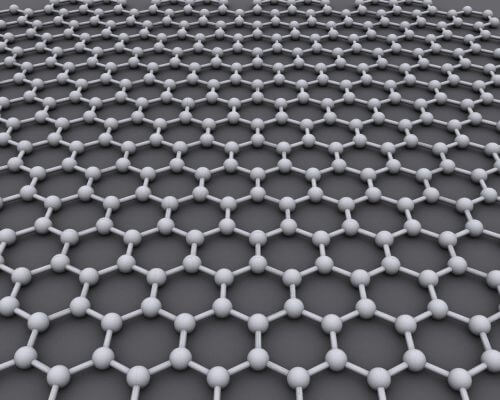Graphene, a single atomic layer of pure carbon, has many promising uses in the field of electronics

Researchers at Ben-Gurion University of the Negev suggest using graphite, a natural and cheap source of carbon, as a raw material for the production of graphene by grinding it in a ball mill. They showed that when added to graphite protective material During grinding, the efficiency of graphene production increases significantly: over 90% of the amount of graphite becomes graphene during grinding compared to less than 3% in other production technologies.
Open applications for graphene (a thin layer of pure carbon) dictate mass production of graphene sheets. However, the production technologies that exist today are complex, expensive and limit the commercialization of graphene.
Research student Matat Bozaglu, Dr. Ilan Perry-Bar and Professor Aran Regev from Ben-Gurion University of the Negev suggest using graphite, a natural and cheap carbon source built from graphene layers, as a raw material for the production of graphene by grinding it in a ball mill. They showed that when added to graphite protective material During grinding, the efficiency of graphene production increases significantly: over 90% of the amount of graphite becomes graphene during grinding compared to less than 3% in other production technologies. the protective material Prevents the formation of amorphous carbon during grinding and can be washed at the end of the process. The size of the graphene sheets is controlled by the type of protective material and the grinding energy.
Possible applications for graphene are in the field of composite materials: the research group demonstrated that mixing graphene powder with a polymer improves heat removal from the composite material (thermal management). This feature is used in the thermal management of electronic devices such as smartphones and laptops that tend to heat up during use.
It should be noted that graphene is a single layer of pure carbon with an atomic thickness - the thinnest material layer imaginable. Its exceptional properties include mechanical strength, electrical conductivity, surface area per gram, biocompatibility and transparency. The 2010 Nobel Prize in Physics was awarded to Andrei Geim and Konstantin Novosolov for the isolation and characterization of graphene.
The research findings were recently published in the journal Advanced Materials.

2 תגובות
OK
So you get graphene powder from a block of graphite. What then?
Is there any way to assemble a chip with millions of logic gates?
Is there even a non-industrial production process?
Has anyone managed to demonstrate a chip based on graphene tubes yet? Something beyond demonstrating a single logical gate or several?
I would be happy if someone who knows and understands the field would answer.
To this day, I have not found anywhere on the Internet (except for the April Fool's Day letter, of course not real on this site)
In silicon, according to what I understand, a pattern is created and then it can be "printed" with the help of light over and over again. In graphene it sounds much more complicated.
I hope the university and/or the researchers took care to patent it.